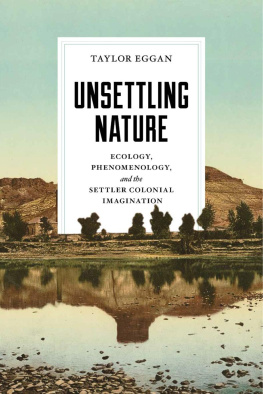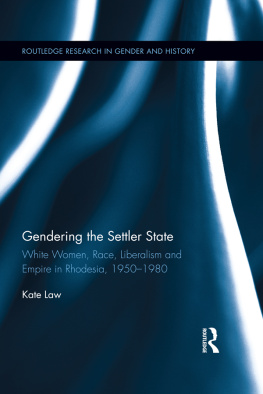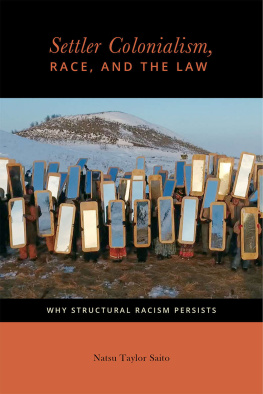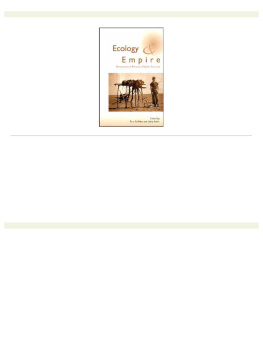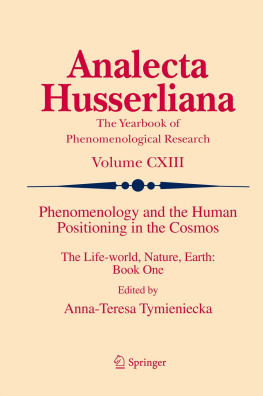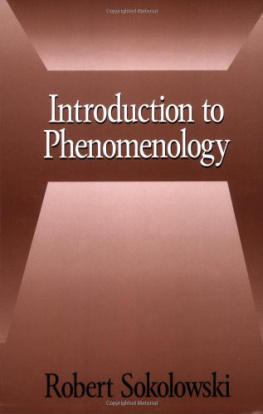Taylor Eggan - Unsettling Nature: Ecology, Phenomenology, and the Settler Colonial Imagination
Here you can read online Taylor Eggan - Unsettling Nature: Ecology, Phenomenology, and the Settler Colonial Imagination full text of the book (entire story) in english for free. Download pdf and epub, get meaning, cover and reviews about this ebook. publisher: University of Virginia Press, genre: Romance novel. Description of the work, (preface) as well as reviews are available. Best literature library LitArk.com created for fans of good reading and offers a wide selection of genres:
Romance novel
Science fiction
Adventure
Detective
Science
History
Home and family
Prose
Art
Politics
Computer
Non-fiction
Religion
Business
Children
Humor
Choose a favorite category and find really read worthwhile books. Enjoy immersion in the world of imagination, feel the emotions of the characters or learn something new for yourself, make an fascinating discovery.
- Book:Unsettling Nature: Ecology, Phenomenology, and the Settler Colonial Imagination
- Author:
- Publisher:University of Virginia Press
- Genre:
- Rating:4 / 5
- Favourites:Add to favourites
- Your mark:
- 80
- 1
- 2
- 3
- 4
- 5
Unsettling Nature: Ecology, Phenomenology, and the Settler Colonial Imagination: summary, description and annotation
We offer to read an annotation, description, summary or preface (depends on what the author of the book "Unsettling Nature: Ecology, Phenomenology, and the Settler Colonial Imagination" wrote himself). If you haven't found the necessary information about the book — write in the comments, we will try to find it.
Taylor Eggan: author's other books
Who wrote Unsettling Nature: Ecology, Phenomenology, and the Settler Colonial Imagination? Find out the surname, the name of the author of the book and a list of all author's works by series.
Unsettling Nature: Ecology, Phenomenology, and the Settler Colonial Imagination — read online for free the complete book (whole text) full work
Below is the text of the book, divided by pages. System saving the place of the last page read, allows you to conveniently read the book "Unsettling Nature: Ecology, Phenomenology, and the Settler Colonial Imagination" online for free, without having to search again every time where you left off. Put a bookmark, and you can go to the page where you finished reading at any time.
Font size:
Interval:
Bookmark:
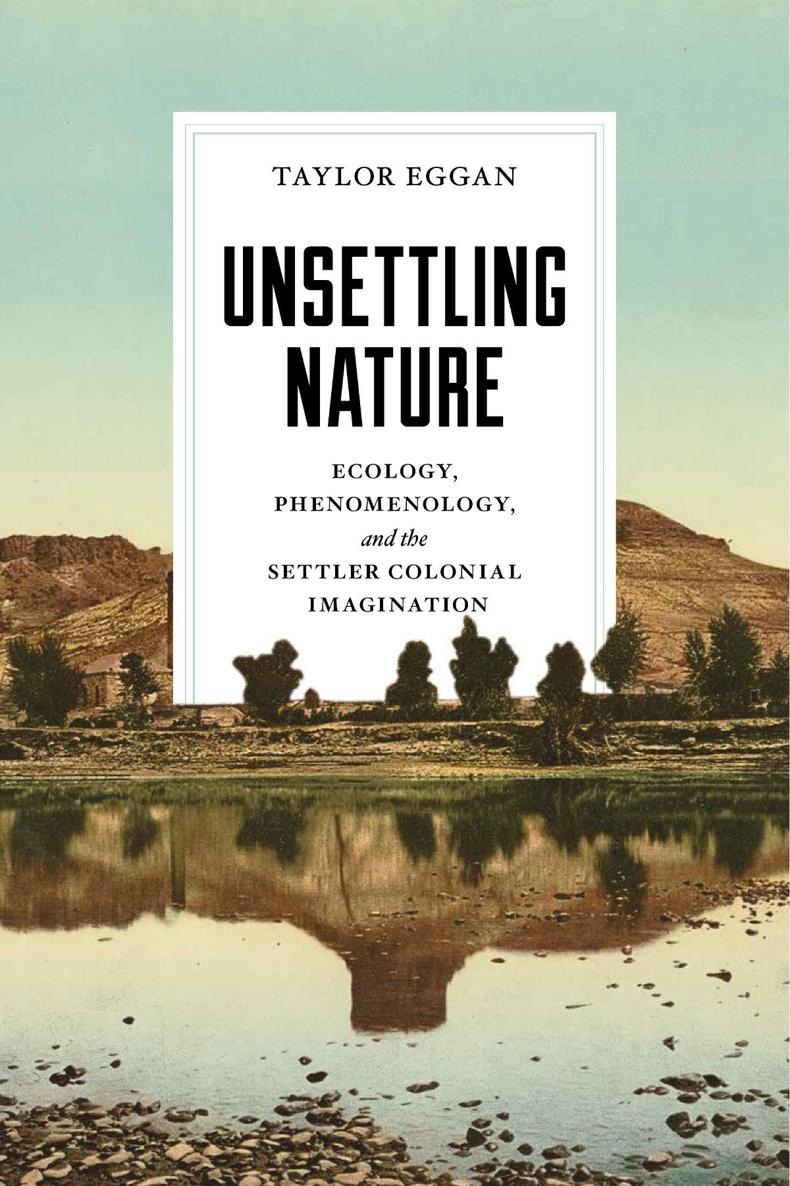
Under the Sign of Nature: Explorations in Ecocriticism
Serenella Iovino, Kate Rigby, and John Tallmadge, Editors
Michael P. Branch and SueEllen Campbell, Senior Advisory Editors
Taylor Eggan
University of Virginia Press
Charlottesville and London
University of Virginia Press
2022 by the Rector and Visitors of the University of Virginia
All rights reserved
First published 2022
Library of Congress Cataloging-in-Publication Data
Names: Eggan, Taylor, author.
Title: Unsettling nature : ecology, phenomenology, and the settler colonial imagination / Taylor Eggan.
Description: Charlottesville ; London : University of Virginia Press, 2021. | Series: Under the Sign of Nature: Explorations in Ecocriticism / Serenella Iovino, Kate Rigby, and John Tallmadge, editors | Includes bibliographical references and index.
Identifiers: LCCN 2021030574 (print) | LCCN 2021030575 (ebook) | ISBN 9780813946832 (Hardcover : acid-free paper) | ISBN 9780813946849 (Paperback : acid-free paper) | ISBN 9780813946856 (ebook)
Subjects: LCSH: EnvironmentalismPhilosophy. | EcologyPhilosophy. | Phenomenology.
Classification: LCC GE195 .E335 2021 (print) | LCC GE195 (ebook) | DDC 304.2/8dc23
LC record available at https://lccn.loc.gov/2021030574
LC ebook record available at https://lccn.loc.gov/2021030575
Cover art: Green River Butte, photocrom, Detroit Photographic Co., ca. 1898. (Library of Congress, Prints and Photographs Division, LCN 2008678213)
for Sweet D
I feel astonished and humbled when I reflect on the far-reaching network of generous individuals required for a project like this to see the light of day.
As a first-time book author, its difficult to resist the temptation to start the accounting early, with those teachers who, like Susan Schierts, affirmed and encouraged my affection for literature, and who, like Amy Hallberg, made learning German such a joy. This project wouldnt have been possible without the early sense of curiosity inspired by these and many others, principal among whom I count my ever-supportive mother, Debbie; my astonishingly generous grandparents, Jack and Eleanor; and the whole Strother clan, which I proudly consider my second family.
I have many gifted pedagogues at Carleton College to thank for their formative influence on my thinking. Im especially grateful to Arnab Chakladar, Pamela Feldman-Savelsberg, Susan Jaret McKinstry, Jamie Monson (now at Michigan State), Kofi Owusu, and Connie Walker.
Im thankful for many wonderful people at Princeton. Perhaps no one has helped more to shape my writing (as both practice and product) than Wendy Laura Belcher, whom Im pleased to count as both a mentor and a friend; I am very much in her debt. Im also indebted to Maria DiBattista, who embodies a nimble critical vitality that I strive to emulate yet fear Ill only ever imitate. To Simon Gikandi I owe much; it is an honor (and singular pleasure) to have studied with a scholar of such extraordinary breadth and intellectual exactitude. Thanks, too, to Ben Conisbee Baer, for his early contributions to this project, and to Claudia Brodsky for introducing me to the unique pleasures and frustrations of Heidegger.
Harriet Calver and Caitlin Charos, two beloved (and much-missed) friends, have both been important and generous interlocutors over the years. I should also thank Vahid Brown, who first put a copy of David Abrams The Spell of the Sensuous in my hands and set me down the path of eco-phenomenological thought.
For their helpful feedback on the Heidegger material, I want to thank those who participated in a seminar that I co-designed with Caitlin Charos for the American Comparative Literature Association conference in 2015: Pushpa Acharya, Julia Michiko Hori, Kate Kelp-Steppins, Adhira Mangalagiri, Aakash Suchak, Sol Pelaez, and of course Caitlin herself. Thanks to Eric Morel and Erin James for their close scrutiny of the Cather material. Further gratitude goes to Ted Geier, who invited me to speak on D. H. Lawrence for ASLEs panel at the 2015 meeting of the Pacific Ancient and Modern Language Association.
At PNCA I want to thank Shawna Lipton for her ongoing moral support, as well as crucially timed financial assistance via the Critical Studies department, which she chairs with fortitude and poise. Im also indebted to Qamuuqin Maxwell, along with Randy Meza and Hannah Bakkenthree passionate students who first introduced me to the work of Eve Tuck and K. Wayne Yang and helped foster intellectual investment in settler colonial studies at PNCA.
At the University of Virginia Press Im grateful to Boyd Zenner, who first brought the project in, and to Angie Hogan and Ellen Satrom, who shepherded it the rest of the way through the acquisitions and publication processes, respectively. To the series editors of Under the Sign of NatureSerenella Iovino, Kate Rigby, and John TallmadgeIm greatly indebted for their incisive comments on the book proposal. Im similarly obliged to the two anonymous peer reviewers, whose generous reports have undoubtedly made this a better book. Thanks, too, to Susan Murray, for her deft and perceptive copyediting.
Portions of chapter 2 appeared previously in a 2018 issue of English Studies (vol. 99, no. 4). Im grateful to the publisher, Taylor & Francis, for permission to reprint that material here.
Land acknowledgments may have symbolic importance, but I also recognize that they cant give land back. Even so, I want to express my gratitude to the many Indigenous communities that have long stewarded the lands on which I, as a settler/trespasser, have spent my entire life. In Minnesota, New Jersey, and Pennsylvania I have lived and worked on the traditional lands of Lakota, Sioux, and Lenape peoples. In Oregon I have lived and worked on the traditional lands of several bands of the Chinook, including the Clackamas, Cowlitz, Kalapuya, Kathlamet, Molalla, Multnomah, Tualatin, Tumwater, Wasco, and Watlala peoples. During the writing of this book I was also fortunate to spend two periods at the gorgeous Caldera Arts Center in Sisters, Oregon, situated on territory traditionally stewarded by the Tananma of the Warm Springs bands and Paiute. Though this book focuses on settler imaginaries, I have written it in the ultimate spirit of seeing these and other stolen lands restored to their original caretakersboth here on Turtle Island and elsewhere on this troubled planet.
Finally, my deepest thanks go to my partner, Daniel Addy, who has been a veritable model of love and support throughout this projects long life. I dedicate this book to him.
I had never lived in a home with such a meticulously landscaped backyard until my partner and I moved into the house on Terry Street. From the expansive, trapezoidal deck attached to the back of the house you could see the whole yard. The vegetable garden lay to the left, and to the right stood a tall lattice structure densely interwoven with jasmine. Immediately in front of the deck stretched a small patch of grass, bordered by a rock garden. Within the layered contours of the rock arrangement lay nestled a miniature pond with a fountain that burbled in the shade of a Japanese maple. A narrow path threaded between the vegetable garden and the fountain toward the back of the yard, where a flush of flowers and decorative plants grew near an arbor vined with pinot noir grapes. The path ended at the far edge of the property, where there stood a second deck, bordered by a wooden fence. Growing up from a circle cut into the deck was an Oregon white oak, large enough to create a canopy of shade but not yet grown to the full splendor of maturity. Tendrils of ivy had crept through the fence from the neighboring property and begun to climb the oak and cover its bark with lush, ever-green foliage. In the shade of the ivy-covered oak my partner and I set up a table and two chairs, establishing a space of retreat that offered a partially occluded view of the house. From this vantage, with the fountain burbling in the background and jasmine sweetening the warm breeze, the backyard extended the ambit of comfort that radiated out from our new home.
Next pageFont size:
Interval:
Bookmark:
Similar books «Unsettling Nature: Ecology, Phenomenology, and the Settler Colonial Imagination»
Look at similar books to Unsettling Nature: Ecology, Phenomenology, and the Settler Colonial Imagination. We have selected literature similar in name and meaning in the hope of providing readers with more options to find new, interesting, not yet read works.
Discussion, reviews of the book Unsettling Nature: Ecology, Phenomenology, and the Settler Colonial Imagination and just readers' own opinions. Leave your comments, write what you think about the work, its meaning or the main characters. Specify what exactly you liked and what you didn't like, and why you think so.

